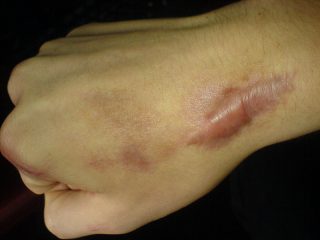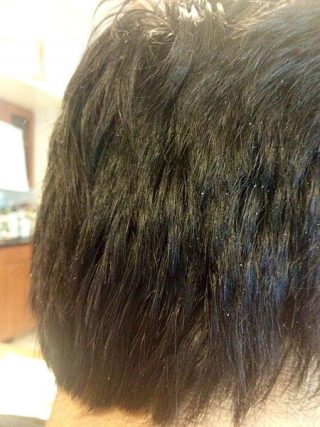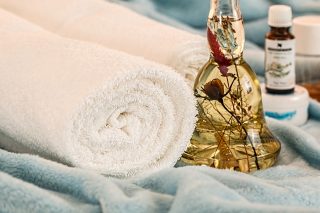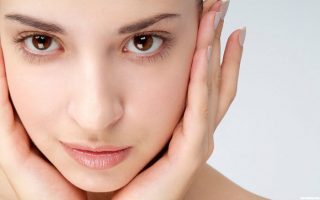If your skin is affected by scar formations, you are probably looking for a solution to help you eliminate the skin damage. But before you choose to spend your money on something that is supposed to help you with this, it might be a good idea to learn some facts about scaring and the process of scar fixig. Facing the important facts, separating them from the false beliefs marketers keep promoting will help you have realistic expectations whatever method you have chosen.
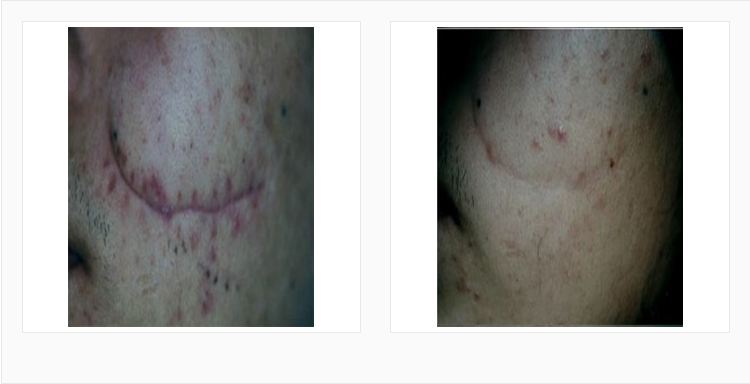
Myths about scars
- Scars can heal completely
Scars usually fade over time but never go away completely.[1]
The complete, 100% removal of a scar is impossible for the time being. Even the most expensive invasive procedures cannot completely erase the scar tissue because even the latest techniques haven’t yet discovered an effective way to restore all the damaged cells and reverse their normal functions. All topical formulas (topical creams, gels, ointments) and cosmetic procedures (laser resurfacing, serious interventions) aim to make the scar less visible, matching the skin surrounding it.
Even if you had acne scars during your teen years, then your problem disappeared as you got older, think again – the open pores and brown spots you keep noticing are the results of the scarring you previously had.
- Onion extract is effective for scar reduction
According to a study from September 2013:
[Onion extract] was statistically ineffective in improving scar height and itching. [19]
Onion extract improved the appearance of both hypertrophic and keloid scars, especially in relation to scar colour.
However, onion extract therapy was suggested in a combination with other scar removal compounds, such as silicon dressings and other ingredients, aiming to restore the damages tissue.
- Vitamin E helps eliminate scars
In 90% of the cases in this study (The effects of topical vitamin E on the cosmetic appearance of scars.), topical vitamin E either had no effect on, or actually worsened, the cosmetic appearance of scars. [15]
However, vitamin E exists in almost all products, aiming to eliminate scarring. Not to mention the side potential effects – contact dermatitis, irritation, redness, and discomfort it may cause.
- Topical steroids and vitamin E will reduce post-procedure scarring
A comparative study [18] analyzed the effect of topical steroids and vitamin E on postoperative scars. The results showed no beneficial effect in terms of of motion, scar thickness, change in graft size, and ultimate cosmetic appearance. All users were observed for one year, some ended up with adverse reactions, following the procedures (>16%), others had visibly larger scars (~20%)
- Sunbathing will make your scars less visible
If your skin is tanned, the scar may appear more obvious as scar tissue does not tan and remains pale. [2]
False. Sun exposure makes your scars worse – the damaged tissue is less resistant to UV radiation. When exposed to direct sunlight, the skin cells forming the scar cannot function properly, and they are more prone to hyperpigmentation and sunburns. If the scar is newly formed, sun exposure can damage the fragile tissue to the point the scar becomes inflamed and expands.
- The severity of the wound is the only factor determining the progress of a scar
There are many factors that can affect wound healing which interfere with one or more phases in this process, thus causing improper or impaired tissue repair.
Your entire lifestyle and genetics define how your wound will heal. This includes your race, age, sex, diet, activity, whether you have bad habits, such as smoking drinking and many other factors, stimulating the skin cell regrowth or doing the opposite. [14]
- Regular massages help the tissue heal faster
It appears that there is preliminary evidence to suggest that scar massage may be effective to decrease scar height, vascularity, pliability, pain, pruritus and depression in hypertrophic burns scaring. This review reflects the poor quality of evidence and lack of consistent and valid scar assessment tools [6]
Massaging the damaged skin will sure increase the blood flow in the area and moisturize the skin if you are using a deep hydrating product. However, you shouldn’t expect actual improvements in the condition of your scar:
Although scar massage is anecdotally effective, there is scarce scientific data in the literature to support it.[6]
Facts about scars
- The number of people affected by scars is huge
In the modern world, each year about 100 million people acquire scars. 75 mln of these are post-operative scars, 11 mln keloid scars, 4 mln burn scars (70% of which affecting children) [12]. 90% of adolescents are affected by acne. 12%–14% of them suffer post-acne scarring. [11]. Individuals aged 10-30 years are most commonly affected by keloids and hypertrophic scars [10]
- Keloid scar formation is genetically predisposed [3]
It appears that some of us drew the short straw because keloids are harder to improve over time
- The complete formation of a scar takes about 2 years
During this period, the scar tissue can transform, either increasing or decreasing in size
- Lavender oil is proven to promote tissue healing and minimizes scarring
A study, investigating the molecular mechanisms of the effect of lavender essential oil (topical) on wound healing proves its’ beneficial effect in skin cell renewal and scar reduction:
Overall, the present data demonstrated that topical application of lavender oil to wounds accelerates wound healing through 1) formation of granulation tissue by collagen synthesis, 2) tissue remodeling by collagen replacement from type III to type I, and 3) wound contraction (wound shrinking). [17]
- Piercings do leave scars
If you thought “I’ll have my ear lobe pierced, it’s super cool and I can take off my earring anytime I want without having a scar”, you might be disappointed to learn that piercing (almost always) leave scars. Even worse, if your piercing is infected at some point, the scar will become even more noticeable and will expand. [13]
- Contaminants in the wound should be eliminated before wound closure
Bacterial proliferation can lead to delayed wound healing, unnecessary discomfort or infection. Avoid using hydrogen peroxide, rubbing alcohol, or iodine to disinfect the wound – these substances are too harsh and may severely damage the skin. [9]
The American Academy of Dermatology suggests using soap and water only. Also, if serious intervention and stitches are needed, it’s important to start treating the wound as early as possible. Such procedures will fasten the healing process and lessen the scarring.
- Vitamins C, A, K, and D are essential for optimal wound healing
Vitamin C hydroxylates lysine and proline during collagen synthesis, and its lack leads to delayed healing and wound dehydration. Vitamin A is required for normal re-epithelialization, proteoglycan synthesis, and normal immune system function. Vitamin K is a cofactor in the synthesis of a number of coagulation factors and is therefore required for thrombus formation and hemostasis – the first stage in wound healing. [8]
- Zinc plays a major role in the wound healing process
It is required for the synthesis of DNA and RNA, with its deficiency leading to inhibition of cell proliferation and disturbances in the formation of granulation tissue. However, it is important to know that a daily dose of over 40mg of zinc can lead to immobilization of macrophages and suppress healing.
People with scars can also benefit from the topical application of zinc – it works by enhancing the re-epithelialization process and decreasing bacteria growth. [7]
Each mark on our bodies has a history, reminding of good or bad memories. However, from an aesthetic point of view, scars are often souvenirs that we would rather not have, as they may lower our self-esteem [4] and even interfere with the communication process with other people. This is why the proper and timely scar removal is needed but, after all, you are the one to decide if the efforts will be worth it.
References
- https://medlineplus.gov/scars.html
Scars - https://www.your.md/condition/scars/#symptoms
Scars - Current Understanding of the Genetic Causes of Keloid Formation
https://www.sciencedirect.com/science/article/pii/S1087002416300752 - How Scars Affect Psychosocial Well-Being
https://www.pennmedicine.org/news/news-blog/2015/may/beyond-skin-deep-how-scars-aff - The role of massage in scar management: a literature review.
https://www.ncbi.nlm.nih.gov/pubmed/22093081 - Scar massage for hypertrophic burns scarring-A systematic review.
https://www.ncbi.nlm.nih.gov/pubmed/28669442 - Studies on zinc in wound healing.
https://www.ncbi.nlm.nih.gov/pubmed/2275309 - Nutrition and Chronic Wounds
https://www.ncbi.nlm.nih.gov/pmc/articles/PMC4217039/ - The Best and Worst Ideas for Open Wound
shttps://advancedtissue.com/2015/07/the-best-and-worst-ideas-for-open-wounds/ - What age group is more commonly affected by keloids and hypertrophic scars?
https://www.medscape.com/answers/1057599-91467/what-age-group-is-more-commonly-affected-by-keloids-and-hypertrophic-scars - Acne Scars: Pathogenesis, Classification and fix
https://www.ncbi.nlm.nih.gov/pmc/articles/PMC2958495/ - Skin scarring
https://www.ncbi.nlm.nih.gov/pmc/articles/PMC1125033/ - Common complications of body piercing
https://www.ncbi.nlm.nih.gov/pmc/articles/PMC1071670/ - Factors Affecting Wound Healing
https://www.ncbi.nlm.nih.gov/pmc/articles/PMC2903966/ - The effects of topical vitamin E on the cosmetic appearance of scars.
https://www.ncbi.nlm.nih.gov/pubmed/10417589 - Wound healing potential of lavender oil by acceleration of granulation and wound contraction through induction of TGF-β in a rat model
https://bmccomplementalternmed.biomedcentral.com/articles/10.1186/s12906-016-1128-7 - Failure of topical steroids and vitamin E to reduce postoperative scar formation following reconstructive procedure.
https://europepmc.org/abstract/med/3312212 - The effects of onion extract on hypertrophic and keloid scars.
https://www.ncbi.nlm.nih.gov/pubmed/17722521



